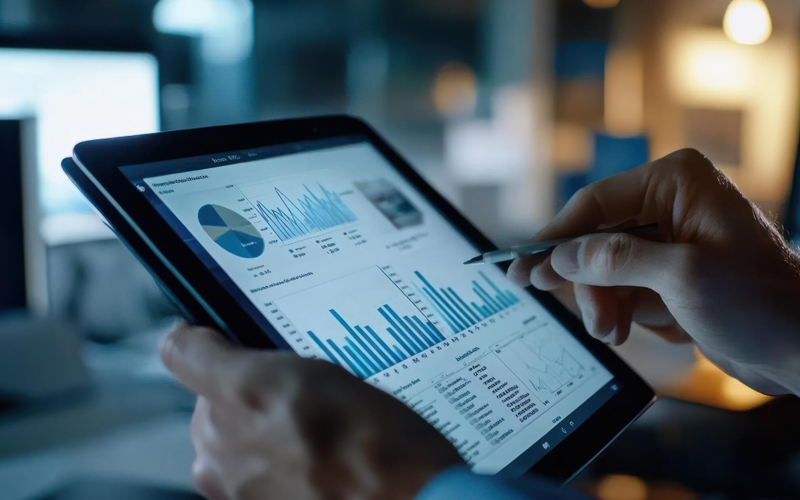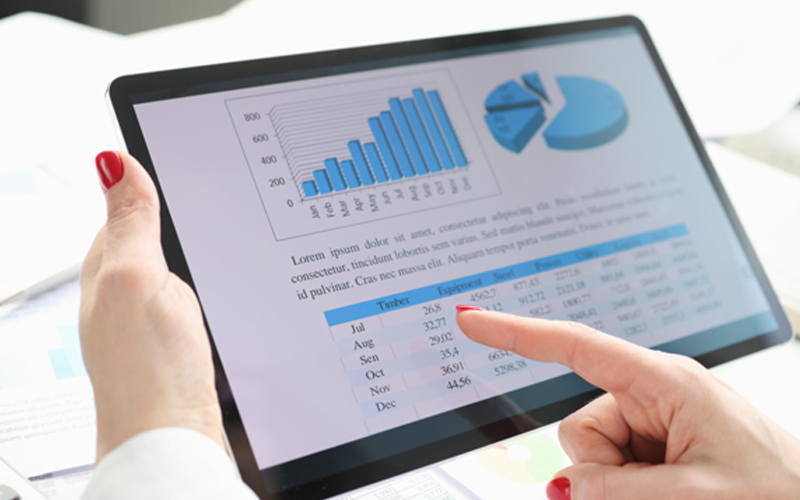Artificial intelligence (AI) is all around us in different forms such as, virtual assistants, chatbots, etc, and AI has truly revolutionised businesses across sectors. Banking and finance is one sector where AI has made huge strides. Today, modern Financial technology services have leveraged AI to streamline financial processes including financial forecasting.
What is AI Financial forecasting
One of the key functions of any business is financial forecasting and it involves an assessment of the future financial performance of the business. The assessment is based on factors like historical data, market trends and several other factors. Financial forecasts predict future revenues, expenses, cash flows, etc. These data points support financial professionals during financial planning, budgeting and other finance-related decision-making.
Financial forecasting plays a vital role in planning the future of an organisation. Realistic financial predictions help businesses to align financial strategies with business objectives. And based on financial forecasts, businesses can assess investment opportunities, mitigate risks and optimise capital structure.
Earlier finance teams had no option but to operate based on fixed projections made at the start of the fiscal year. This made it difficult to adapt the strategies to any changes in their environment or the market during the year.
The cloud brought change
When cloud-based ERP systems along with AI tools made a foray into the financial ecosystem, they transformed financial forecasting, which does not rely on traditional financial metrics any more. AI in financial forecasting has completely changed how forecasters rate and dissect the financial health of a business. Data reveals that 80% of Financial Planning and Accounting (FP&A) teams are now projecting more often and more accurately with the help of AI tools.
Power of machine learning
The technology that powers automated financial forecasting is machine learning (ML) which is a subset of AI. ML works with large data sets to identify trends and meaningful patterns. ML algorithms analyse historical data, market trends and economic indicators at high speeds and with accuracy. They identify insights that might be missed by traditional analytics. These algorithms have a more nuanced understanding of an industry or the performance of a business.
Predictive Analytics
Predictive Analytics - which is a subset of ML, forecasts future financial trends based on historical data. It provides insights that help the business to make informed assumptions about revenue projections, market share or risks. This technology answers the question, "What is most likely to happen?"
Natural Language Processing (NLP)
Natural Language Processing (NLP) is another critical technology that enhances financial forecasting by deriving meaning from unstructured data. It sifts through large volumes of text data in different formats to provide valuable insights to analysts. NLP can extract information from sources such as text reports, news stories, transcripts of audio and video clips, social media posts, etc.
Sentiment Analysis also plays a vital role in financial forecasting. This technology assesses the mood of the market participants by analysing positive/negative patterns in a commentary. The insights provided by sentiment analysis tools influence equity pricing.
Generative AI (Gen AI)
Generative AI (Gen AI) is the newest technology that has made inroads in the financial realm. Gen AI in finance enhances risk management and fraud detection, facilitates personalised services, refines investment strategies and overcomes data limitations. This technology helps increase the diversity and size of datasets, which helps in training more accurate and robust ML algorithms. Gen AI automates the creation of comprehensive financial reports including income statements and balance sheets. It helps in simulations and scenario planning by generating synthetic data.
Practical Use Cases: How AI is Used in Forecasting Today
The true power of AI in forecasting is seen in its practical applications across the finance function.
- Demand Forecasting: AI analyzes past sales, seasonality, market trends, and even competitor promotions to predict future product demand with high accuracy, optimizing inventory and production.
- Cash Flow Projections: By analyzing payment histories, invoices, and expense patterns, AI provides a much clearer, real-time picture of future cash flow, helping prevent shortfalls.
- Budgeting and Scenario Planning: AI allows finance teams to run thousands of simulations instantly. Teams can model the impact of a potential recession, a new product launch, or a supply chain disruption on their financial plans.
- Automated Anomaly Detection: AI tools can monitor transactions in real-time and flag anomalies that might indicate fraud, errors, or emerging risks long before a human analyst would spot them.
Key Business Benefits of Using AI in Forecasting
- Increased Accuracy and Reliability: AI reduces the human bias and errors inherent in manual spreadsheet-based forecasting, leading to more reliable predictions.
- Enhanced Speed and Efficiency: AI automates the time-consuming tasks of data gathering and processing, enabling finance analysts to make informed decisions faster. The month-end close and reporting cycle can be significantly shortened.
- Proactive Risk Management: AI-based tools facilitate simulations and scenario planning, helping financial teams develop resilient strategies by considering future economic and market events.
- Deeper Strategic Insights: AI platforms include interactive dashboards and data visualisation tools, which make complex data understandable. Predictive analytics provides deep insights into market trends and customer habits, transforming the finance team from scorekeepers to strategic advisors.
- Integrated Business Planning: AI paves the way for an integrated company-wide planning model where different departments can understand the financial implications of their operational decisions in real-time.
Why AI is the way forward for financial forecasting
- AI-based tools facilitate simulations and scenario planning and these help financial teams develop strategies by considering future economic and market events. Scenario planning also facilitates risk mitigation.
- AI tools help businesses identify future expansion opportunities and help ensure the financial viability of a business.
- Predictive analytics provides deep insights into various aspects like market trends, customer habits, etc., which help in accurate forecasting.
- AI platforms include interactive dashboards and data visualisation tools, which democratise data and increase visualisation and reporting.
- AI for financial services paves the way for an integrated company-wide planning model in which different departments can understand the implications of departmental decisions in financial planning.
- AI tools provide real-time insights that enable financial teams to view data as it occurs and make realistic forecasts.
- AI tools enhance the efficiency of data processing enabling finance analysts to make informed decisions faster.
In conclusion
Artificial intelligence in financial forecasting signifies a shift toward more insightful and data-driven decision-making. Technologies like ML enhance predictive analytics, automate routine tasks and reshape the role of finance professionals in strategic planning.
Making AI in Financial Forecasting a Reality with Infosys BPM
Infosys BPM provides Financial Technology Services that help finance departments adopt a digital-first approach and foster the growth of an intelligent enterprise. Powered by the latest technologies, our intelligent solutions facilitate real-time finance which helps in making accurate predictions. Instead of just providing tools, we partner with you to orchestrate your financial data and technology strategies, ensuring you gain a true competitive advantage. Let us help you move beyond static spreadsheets to dynamic, AI-powered forecasting.
Frequently Asked Questions (FAQ)
What is the main difference between traditional forecasting and AI forecasting?
Traditional forecasting typically relies on historical internal data and linear regression models, often updated quarterly or annually. AI forecasting incorporates a much wider range of real-time internal and external data and uses advanced machine learning algorithms for more dynamic, accurate, and continuous predictions.
Does AI replace the need for financial analysts?
No, AI augments the role of financial analysts. It automates repetitive data collection and processing, freeing up analysts to focus on higher-value activities like strategy, interpretation of results, and advising business leaders. It shifts their role from data wrangler to strategic partner.
How difficult is it to implement AI in our financial forecasting process?
The complexity can vary. While building a custom AI model from scratch can be intensive, modern cloud ERP systems and specialized F&A partners like Infosys BPM offer solutions with pre-built AI capabilities. The key is to have clean, accessible data and a clear strategy, which is where an expert partner can be invaluable.









